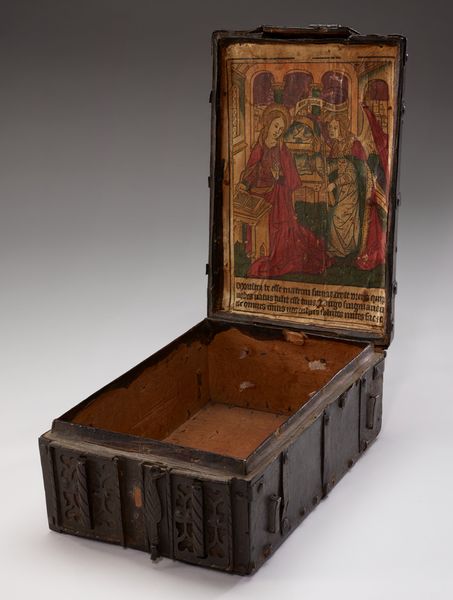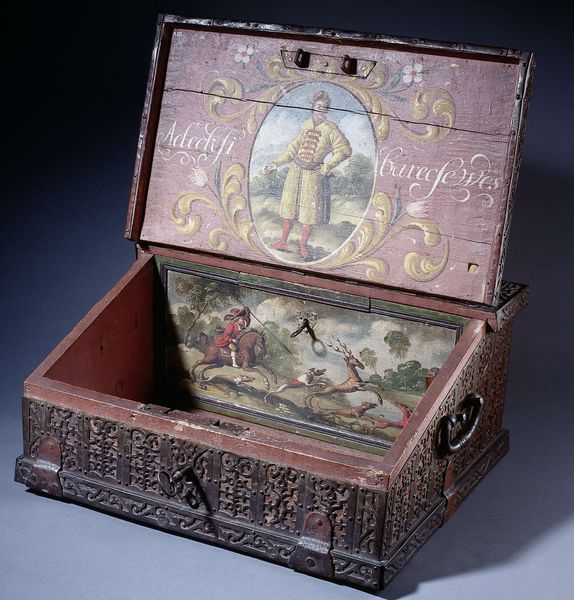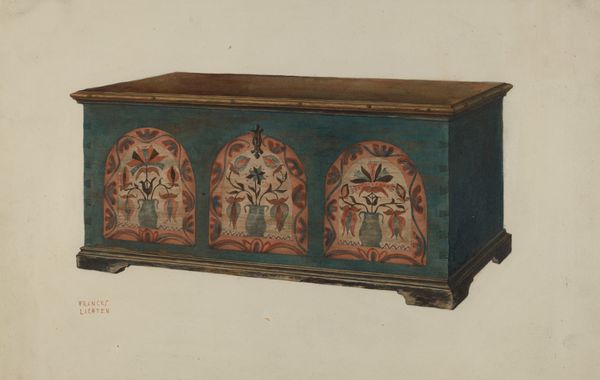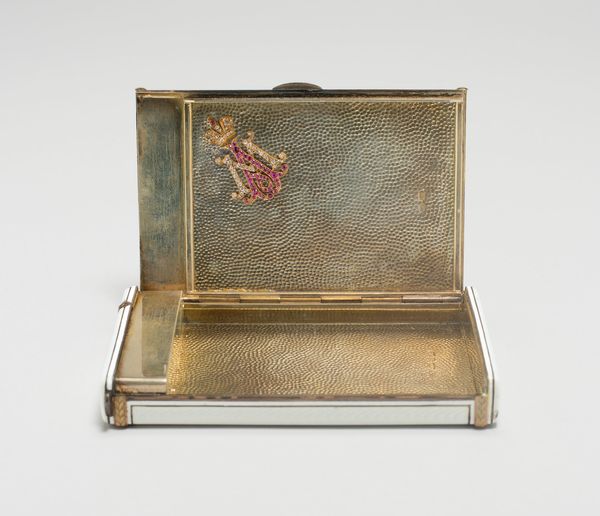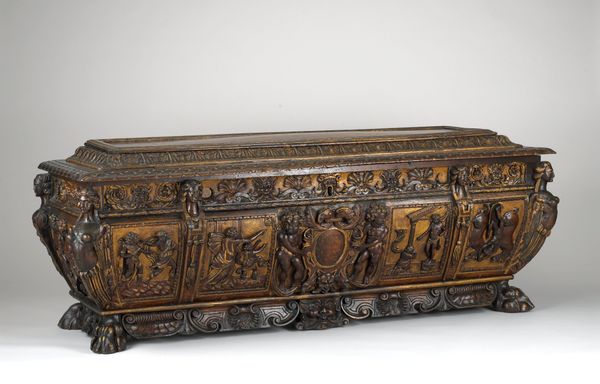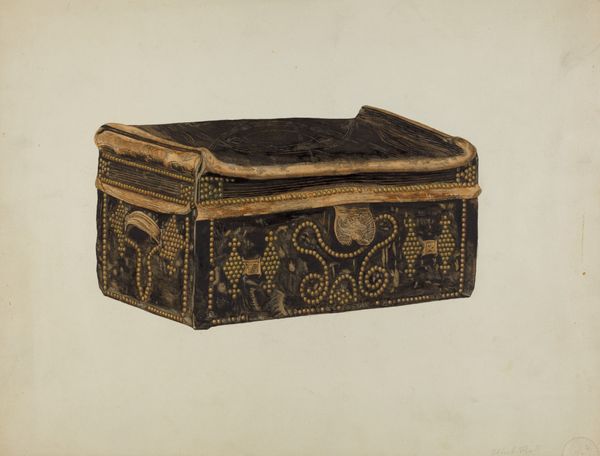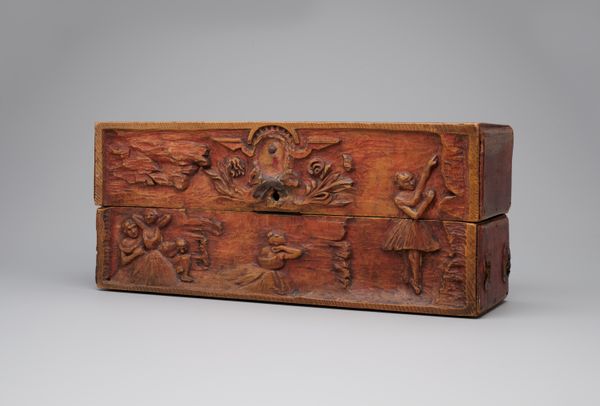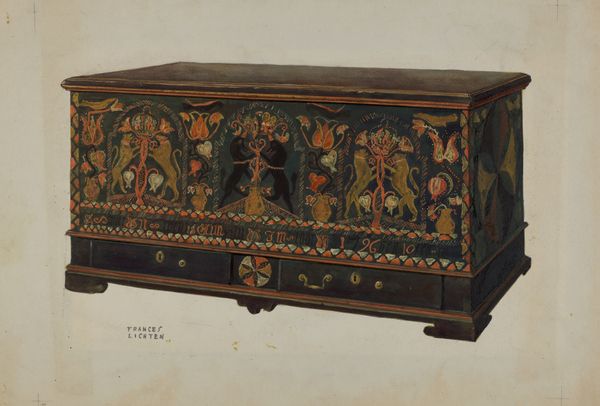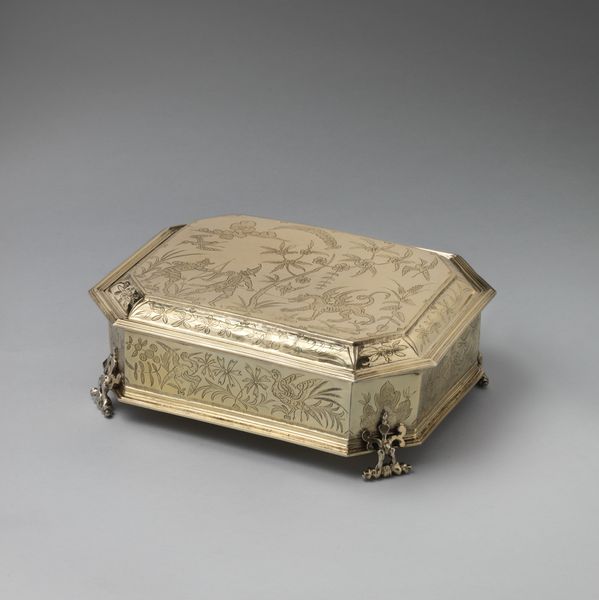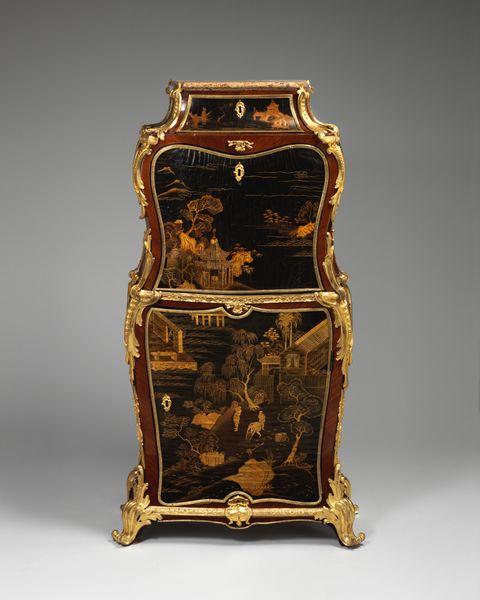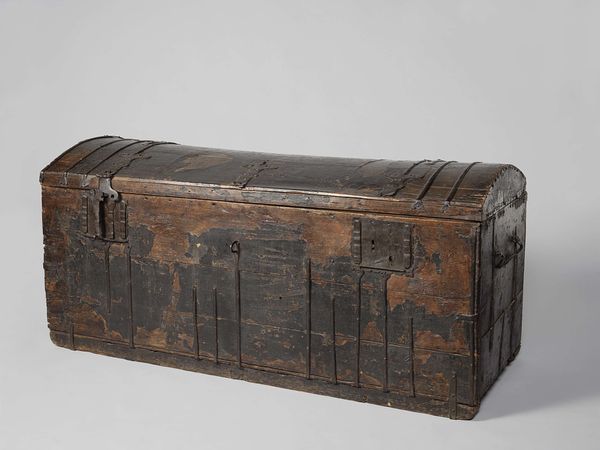
panel, tempera, painting, print
#
medieval
#
panel
#
narrative-art
#
tempera
#
painting
# print
#
figuration
#
history-painting
#
international-gothic
Dimensions: sheet: 22.5 x 14.5 cm (8 7/8 x 5 11/16 in.) overall (cofferet): 10 x 16 x 23.5 cm (3 15/16 x 6 5/16 x 9 1/4 in.)
Copyright: National Gallery of Art: CC0 1.0
Editor: Here we have an anonymous work from around 1500, "Christ as the Man of Sorrows," executed in tempera on a panel. It's striking how the figures are rendered, almost graphic in their presentation. How do you approach a piece like this from a formal perspective? Curator: The very material presence of this panel commands attention. Its surface, layered with tempera, presents a fascinating study in texture. Note how the artist uses line to define the figures, achieving a graphic quality as you observed. The composition adheres to a strict symmetry. Consider the central figure of Christ, flanked by two other figures under a canopy. This visual arrangement leads the eye directly to the focal point: the suffering Christ. The carefully constructed planes dictate how we interpret the image. Editor: It’s interesting that you point out the symmetry; I was so focused on the subject matter that I almost missed the geometric balance. It's almost like the figures are subservient to the composition. Curator: Precisely. While we acknowledge the narrative aspect – Christ's suffering – our analysis foregrounds the artist's structural decisions. The limited palette – the stark contrast between the figures and the ground – contributes to a certain austerity, intensifying the visual impact. Does the austerity reinforce a reading beyond its subject matter, perhaps one about the essence of the painting’s geometric balance? Editor: That’s a good point. I think I was reading too much into the figure and lost sight of the work's geometry, and its stark aesthetic. Curator: By examining the formal elements – line, color, composition – we gain insights that aren't immediately apparent through a purely thematic approach. These formal choices contribute to the work’s overall meaning. Editor: I appreciate your breaking down the pictorial composition! This focus on the art elements helped to provide a new understanding. Curator: Indeed, by dissecting the aesthetic choices we start to uncover layers that enrich the viewing experience.
Comments
No comments
Be the first to comment and join the conversation on the ultimate creative platform.
